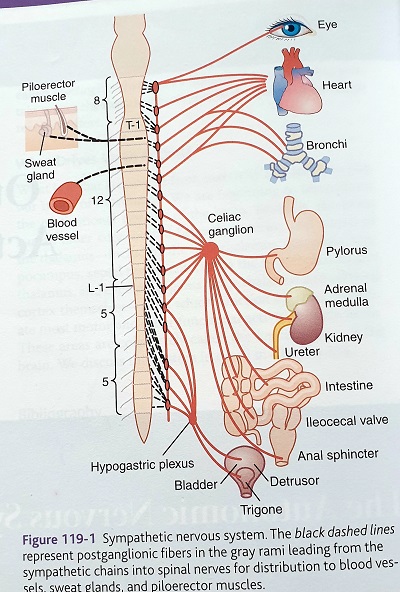Stress Management
Definition : Stress is a change in the external environment, which threatens internal environment of a cell. (May be change in body itself.)
- It is managed by body very well, by specific response generated by sympathetic branch of Autonomic Nervous System.
- Since this branch is part of Autonomic nervous system, it occurs automatically, without our knowledge.
- The response to stressful situations is the ancient lifesaving function of our body. It is designed to save our life. It was designed, when our life had to face dangers, from wild animals or natural calamities.
- So the response was designed for flight or fight. It is associated with an emotion of fright. So it is called as fright /fight and flight response.
- Now our present life poses situations, which trigger the fright signal but physical danger is seldom present. The danger or damage is intellectual challenge, performance challenge, emotional turmoil, financial crisis etc.
- Whatever may be the cause, fright signal operates the same way of old design to produce following effects in body.
- Pupillary dilatation.
- Increase in heart rate.
- Increase in force of contraction of Left ventricle.
- Widening of airway passage.
- Rapidity of platelet aggregation.
- Breakdown of Glycogen to glucose to increase blood glucose level.
- Breakdown of Triglycerides to free fatty acids released in blood.
- Increase in neuronal activity in the brain.
- Increase blood flow to skeletal muscles.
- Decrease blood flow to kidneys, gastro intestinal tract & skin.
11.Increase in metabolic rate to as much as 100% above normal.


These effects are mediated by Sympathetic branch of Autonomic nervous system – which generates Adrenaline & Nor-adrenaline hormones.These hormones are released by two mechanisms.1)Sympathetic nerve stimulation 2) Release of these two hormones by Adrenal medullae
Importance of Adrenal medullae is ,their release of adrenaline & nor adrenaline reach each cell of body which are not inervated by sympathetic syatem.
When large portion of sympathetic nervous system discharge at same time, is called Mass discharge. This enables the body to perform vigours muscular activity.
As the mental or physical stress can excite the sympathetic system, is is said that the purpose of sympathetic system is to provide extra activation of body, in the states of stress, which is called sympathetic stress response
There exists another stress response which is generated by ACTH secreted by pituitary and cortisol secreted by Adrenal Cortex, in the response to ACTH.Almost any type of stress,physical or neurogenic causes marked increase in ACTH secretion followed in minutes by great secretion of cortisol hormone.Examples of different types of stress are trauma,infection,intense heat or cold,surgery,restraining to small premises & any debilitating disease.
The probable benefit of these two hormones is mobilization of amino acids & fats from their cellular stores.Amino acids are used for glucose formation (Gluconeogenesis) & fatty acids are made available for enery supply.
But as a part of their anti inflammatory action,cortisol suppresses the immune system causing decrease in lymphocyte production.
PNEI Axis-Stressful situation giving rise to fear,insecurity,frustration lower the Immune response.This is proved by Cytokine levels & number of Natural Killer cells of Immune system.
The neurotransmitters,hormones & cytokines are in constant communication with each other forming a Supersystem.(with the help of receptors)
The stress response generated by sympathetic system & adrenal cortx., under unfavorable and dangerous circumstances, appears & slowly vanishes as the circumstances improve.
Today the stressful situation is continued for days, weeks, months and years. The stress response also continues for long time. Long term physiological effects affect the organs & system leading to pathological changes..
These pathological changes manifest as Acid Peptic Disease, Systemic Hypertension, Diabetes Mellitus Type II, Coronary Artery Disease, Exacerbation of Bronchial Asthma, Anxiety – Depression – Insomnia .
- Mode of Action of MYT
- Yama & Niyam discipline our behavior in personal & social life, which minimize disturbances around us.
- Asana & Pranayam discipline our body & energy systems to be physically strong to face the challenges.
- Pratyahar disciplines our sensory system for optimizing inputs.
- Dharana & Dhyan control our mind and thought process to cope up with changes & challenges occurring around us.
Benefits of MYT
- Strong Body
- Stable mind
- Sharp Thought process
- Progress & Prosperity achieved with care of nature around us.
* We teach this information in the Medical Yoga Teacher Course and Advance Course for Yoga Professionals and doctors.
* This information is applied in Medical Yoga Therapy to help the patients.